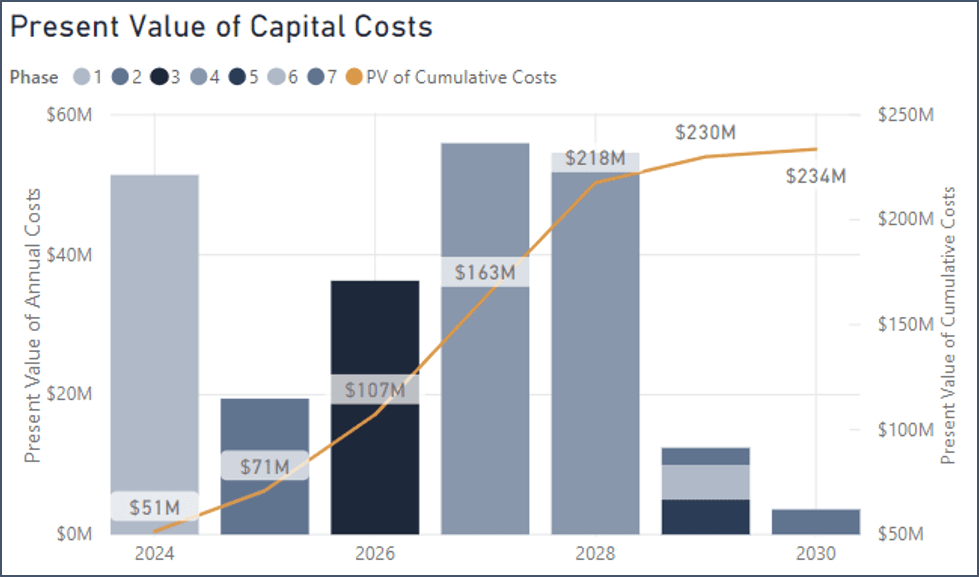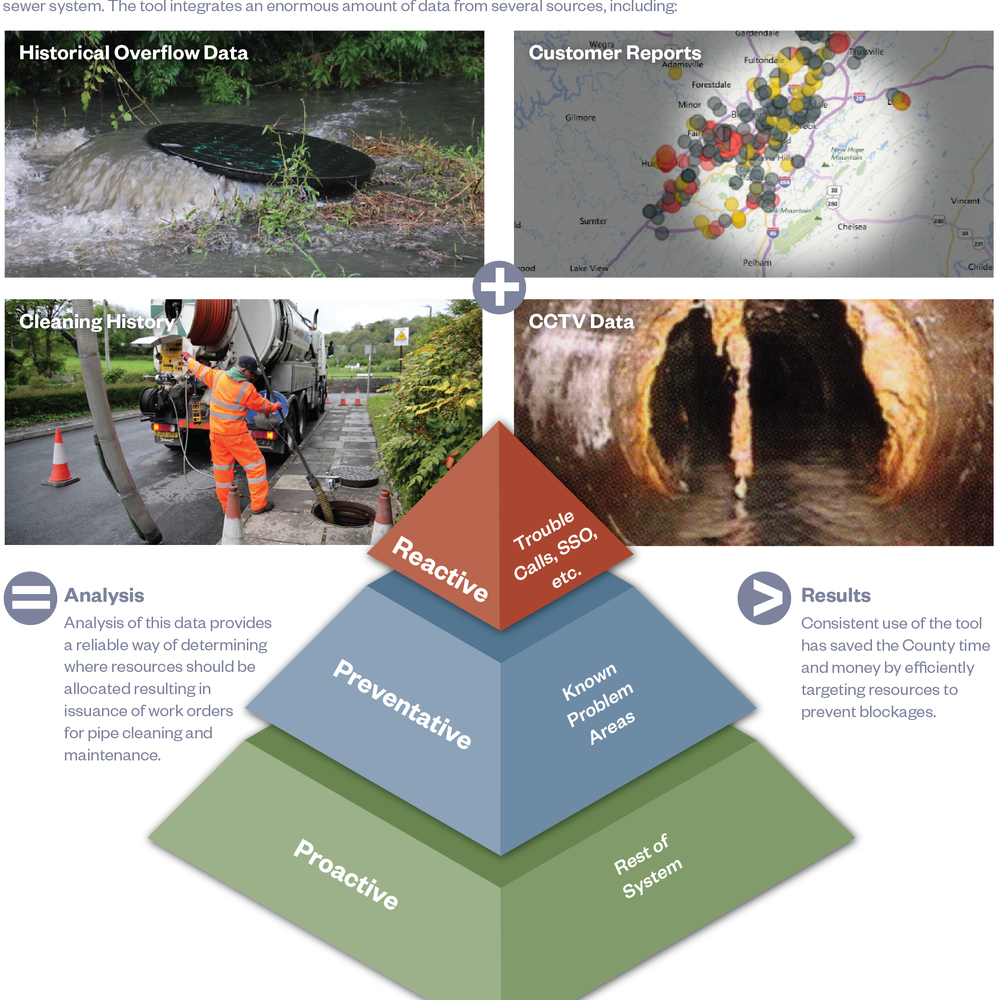Trigger-Based Utility Planning
Capital Expenditure Timing Analysis for Noman M. Cole, Jr., Pollution Control Plant
Last Modified Jan 26, 2023
Introduction
Fairfax County, VA commissioned Hazen and Sawyer to complete the Primary/Secondary Program, a comprehensive evaluation of infrastructure rehabilitation and reinvestment strategies for the primary and secondary processes at the Noman M. Cole, Jr., Pollution Control Plant (NCPCP). Several factors drove the need for the Program, including the age of the existing infrastructure, the need to achieve future process treatment goals, and the anticipated growth of flows and/or loads over the 30-year planning horizon. These goals are defined by the numerical limits set by the Virginia Pollutant Discharge Elimination System (VPDES) permit. Based on the past and more recent regulatory climate, it is assumed that the existing mass limits for cBOD5, TSS, TN, TP and concentration limits for NH3-N will remain unchanged for the future 80-mgd annual average design flow. Because meeting these static mass limits becomes more challenging as influent flow or load increases, it is common for utilities to explore, and where advantageous, leverage other options for nutrient management.
As such, the implementation of various treatment infrastructure components under the Primary/Secondary Program will be triggered by one or more of the following: flow, load, capacity, infrastructure condition or regulatory based factors. A capital investment financial analysis tool was developed to evaluate the impact of implementing different primary, secondary, and tertiary treatment capital investments and phasing under different future condition scenarios. This financial analysis tool takes a holistic, whole plant (liquids) approach to evaluate and quantify the anticipated costs of improvement scenarios based on anticipated increases in nutrient loading. This analysis was used to determine the optimal timing and type of infrastructure investments related to the NCPCP primary/secondary and related tertiary processes.
Related Topics:

Materials and Methods
Three integrated alternatives were identified as potential rehabilitation and reinvestment strategies for the primary and secondary facilities to meet Fairfax County’s goals for flow and treatment over the 30-year planning horizon. The core elements and foundation for the integrated alternatives are the secondary nutrient removal process and solids separation process. These processes drive removal of organics, solids, and nutrients at the NCPCP.
A Microsoft Power BI based financial analysis tool was developed to evaluate the financial impacts of different infrastructure implementation scenarios at the NCPCP. The purpose of this analytical tool is to determine key summary metrics that can be used to support the County’s decision-making process. Using time value of money principles, the analysis evaluates the financial impact of different phasing, infrastructure component and process improvements at the plant for the three integrated alternatives. The variables that drive implementation of the various items under the Primary/Secondary Program include:
- Capital costs of the integrated alternatives
- Influent flows and loads (e.g., TKN, BOD, TP)Construction phasing of the integrated alternatives
- Infrastructure capacity during construction
- Intermediate infrastructure investments to defer major capital investments
- Financial metrics (financing terms)
Summary metrics provided by the tool include:
- Present value of cost savings associated with deferment of large capital investment
- Net present value of project scenarios
- Optimization of financial impacts through project phasing for defined scenarios
- Sensitivity analysis of model results to input variables

Results
This presentation will share the results of different evaluations scenarios for the three integrated alternatives. The scenarios evaluate the impact of multiple infrastructure improvement triggers including:
- The impact of a decreasing rate of change of influent flows and loads
- The impact of an increasing rates of change of influent flows and loads
- Incorporation of “leverage existing assets first (LEAF)” principles, to maximize the beneficial use of existing infrastructure prior to the construction of new assets
The timing of infrastructure implementation is primarily driven by increasing flows and loads to the NCPCP. Therefore, it is necessary to identify the optimal time to begin construction such that enough capacity is maintained at the NCPCP. A Power BI dashboard was designed such that triggers may be modified to instantaneously visualize how infrastructure implementation may change. For example, increasing the rate of change in flows or loads would require an earlier start date for construction.
Alternative triggers that may delay construction include applying LEAF principles to maximize the beneficial use of existing infrastructure. For example, expansion of the existing tertiary moving bed bioreactor may provide additional nitrogen removal capacity at the NCPCP therefore potentially allowing the deferral of capital investment required to treat forecasted future TKN loads.
In conclusion, this tool provides the ability to dynamically quantify the financial costs and benefits of deferring major capital investments, optimize financial metrics by varying project timing and components for capital investment scenarios, and is easily updatable to adapt to future conditions.










